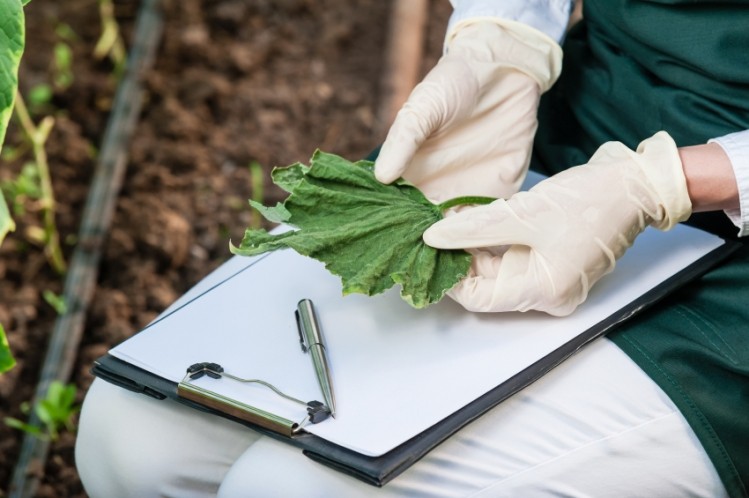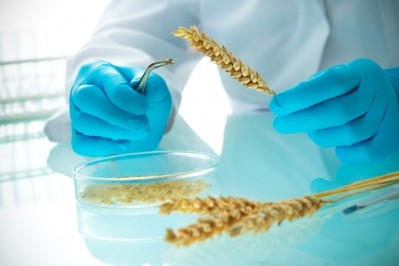Special Edition: Organic Feed
New plant breeding techniques – opportunity or death knell for organic feed and food?

The EU arm of the international organics group, IFOAM-EU, is clear in its view that NPBTs should be classified as GMOs.
In a position paper released in December 2015, that association urged the Commission to clarify the situation quickly, before plants bred with such techniques start being released into the environment on a commercial scale.
“From a legal and technical point of view new plant breeding techniques should be regulated as genetically modified organisms (GMOs). Moreover, traceability and transparency are key to allow both organic and conventional producers to exclude products derived from new genetic engineering techniques from their production processes.
“If NPBTs are not classified as GM, and, thus, have no traceability conditions attached to them, the burden of proof would fall on organic seed companies and organic operators to show they did not use cultivars derived from NPBTs, as there would be no obligations for breeding companies, per se, to disclose the applied breeding methods,” Eric Gall, deputy director and policy manager, IFOAM EU, told FeedNavigator.
Dr Wendy Harwood, a senior scientist engaged in crop transformation research in the UK, when updating the committee on animal feedstuffs of the Food Standards Agency (FSA) on NPBTs in 2014, said tools like genome editing and cisgenesis provide plant breeders with faster methods to boost crop performance as they allow more precise modification of plant genomes than was previously possible.
“There is huge excitement in the research community over their potential for the feed sector and food security in general,” she told this publication back then.
In October 2016, France asked the EU Court of Justice to rule on the legal classification of products generated by NPBTs. The judgement is expected in about 12 months from now. The Council of State, the highest administrative court in France, wants the ECJ to rule on whether NPBTs should, in fact, be regulated according to EU GMO law, whether they should be categorized as GM varieties in EU legislation and whether countries could ban NPBTs.
According to IFOAM-EU, NPBTs use technology that interferes at the sub-cellular and genomic level. It wants GMO legislation to apply when approving seeds derived from new genetic engineering processes.
Topic to be debated at IFOAM assembly
Markus Arbenz, executive director of IFOAM Organics International, which represents the global organic movement, is not so cut and dry on the issue, though.
“For the moment, we are taking the same stance as IFOAM EU on the new plant breeding techniques. However, the process around finding a position at the global level takes a bit more time, because we consider the views from all continents. We are trying to be as neutral as possible. The organic movement has to adapt as new knowledge is generated – and the organic system thrives of variety – it keeps it robust. We will debate the topic in full at our general assembly in November,” he told us.
When asked what is the fulcrum of the debate around new plant breeding techniques at the international level, he said: “It’s a bit of everything, there are ethical and moral questions, liability concerns, or uncertainty around risks or whether potential opportunities will be missed if we don’t embrace them; it is not one isolated thing, all areas must be considered,” he said.
Seed ownership
Seed ownership questions also come into play.
Closed sourcing, restrictive licenses, monopolies and patent claims on seed varieties are hot button topics around NPBTs, but also in organic seed supply.
“What might change the picture on the new breeding techniques in the coming years would be a delinking of ownership around seed cultivars, allowing them to become widely available through open sourcing. That and other evidence – taking into account the precautionary principle - may alter the organic movement’s perspective on breeding methods,” added Arbenz.
Organic plant breeding and seed research
As it is, organic plant breeding is suffering from insufficient seed availability, which is the result of, among other things, intellectual property (IP) rights, according to an article by Annemieke van den Dool, from Hungary’s Central European University. Writing in an IFOAM publication, she noted open source biology, freedom to use the seed and any of its derivatives, has great potential to overcome IP issues and increase seed availability.
While organic standards increasingly require the use of organic seed, these are for now only available for a limited amount of plant varieties and only in limited quantity, explained Gall.
He said the EU action plan on organic farming, released in 2014, recognized the importance of developing the use of organic seeds and the organic plant breeding sector.
Gall told us that the Commission has called for a four-year long European research project, under the Horizon 2020 EU research programme, aimed at supporting the development of organic seed through plant breeding that is in line with organic principles, and low input farming conditions. The project will also look to increase availability of organic seeds and varieties.
Significant seed multiplication and breeding efforts are needed to improve the performance of the sector through better-suited varieties.
The majority of organic seed, he said, is based on crop varieties that were bred for the conventional sector, and there is a lack of traits to meet organic and low-input production conditions.












